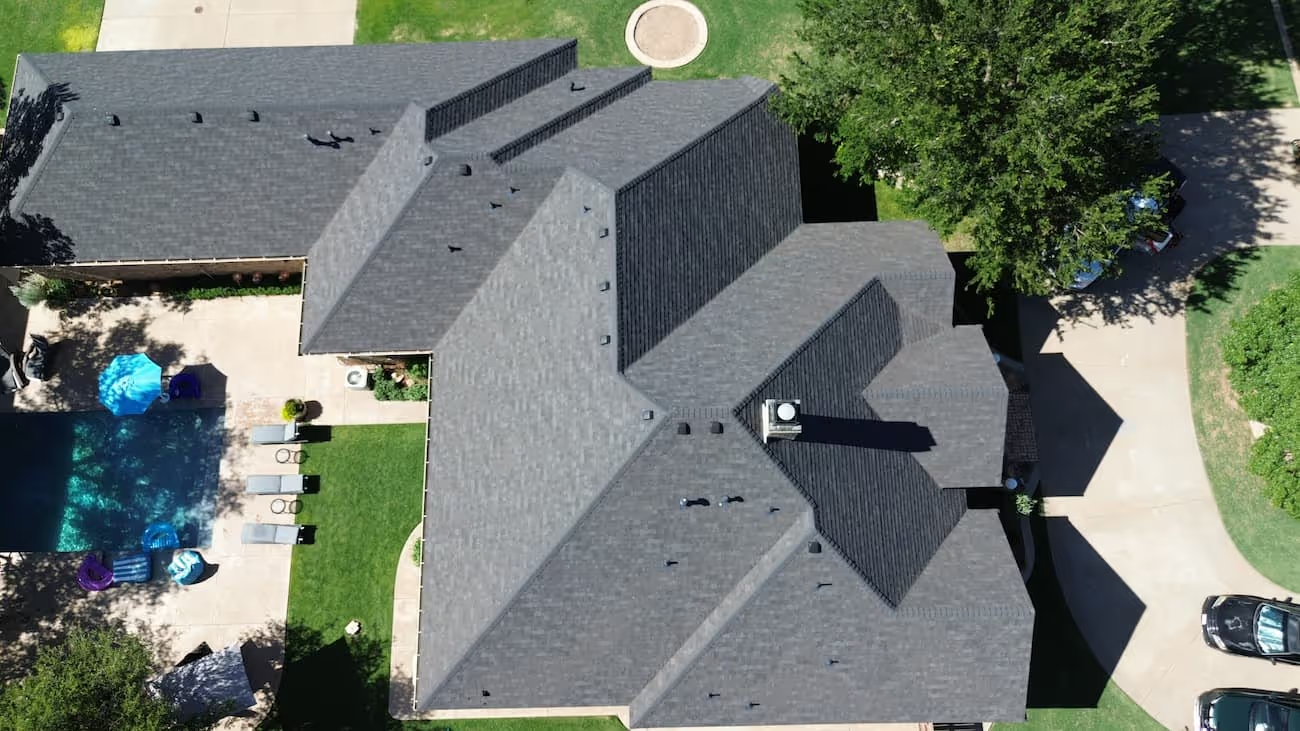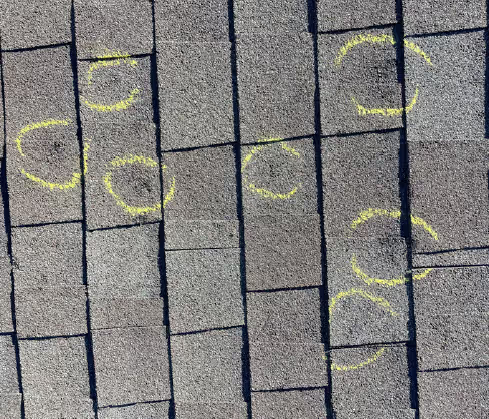The True Price of Procrastination
When faced with roof repair estimates, many homeowners experience sticker shock and decide to "wait and see" if the problem gets worse. This seemingly logical approach can transform minor $500-800 repairs into catastrophic $15,000-50,000 disasters within months or even weeks, depending on weather conditions and the severity of underlying issues.
Understanding the exponential cost escalation that occurs when roof problems are ignored helps homeowners make informed decisions that protect both their property and their financial well-being. The hidden costs of delaying roof repairs extend far beyond the initial repair estimate, creating a domino effect of damage that impacts every aspect of your home's value and safety.
The Exponential Cost Escalation
Stage 1: Minor Issues (Initial Cost: $200-800)
Early-stage roof problems typically involve isolated damage such as a few loose shingles, minor flashing issues, or small leaks that appear only during heavy rainfall. Professional intervention at this stage costs minimal amounts while preventing extensive future damage.
- Missing or damaged shingles affecting 10-20 square feet
- Minor flashing separation around vents or chimneys
- Small granule loss or beginning edge deterioration
- Occasional dripping during severe weather events
Stage 2: Progressive Damage (Cost: $2,000-8,000)
When minor issues remain unaddressed, water infiltration begins affecting underlying materials. Decking damage, insulation replacement, and interior repairs become necessary as moisture spreads throughout the roofing system.
- Water-damaged roof decking requiring replacement
- Compromised insulation reducing energy efficiency
- Interior ceiling and wall damage from water infiltration
- Mold growth requiring professional remediation
Stage 3: Structural Compromise (Cost: $8,000-25,000)
Advanced deterioration affects your home's structural integrity. Rafters, joists, and support beams may require reinforcement or replacement when water damage spreads to structural components.
- Structural beam damage from prolonged water exposure
- Foundation issues from poor drainage and water runoff
- Electrical system damage requiring rewiring
- HVAC system impacts from moisture and air quality issues
Stage 4: Catastrophic Failure (Cost: $25,000-75,000+)
Complete roof failure necessitates total replacement plus extensive interior restoration. Emergency repairs during catastrophic failure carry premium pricing while exposing your home to weather damage during the repair process.
Water Damage: The Silent Destroyer
Water damage represents the most expensive consequence of delayed roof repairs, with costs escalating rapidly as moisture spreads throughout your home's structure. A single cup of water entering your home daily can cause thousands in damage over a typical winter season.
Progressive Water Damage Costs
Week 1-2: Surface Damage
- Ceiling stains and paint damage: $200-500
- Carpet and flooring moisture damage: $500-1,500
- Basic cleanup and dehumidification: $300-800
Month 1-3: Structural Penetration
- Drywall replacement and repainting: $1,500-4,000
- Flooring replacement (hardwood, tile, carpet): $2,000-8,000
- Insulation replacement and upgrading: $1,000-3,000
Month 3-6: Mold and Health Hazards
- Professional mold remediation: $3,000-12,000
- Health impacts and temporary relocation costs: $2,000-10,000
- Air quality restoration and HVAC cleaning: $1,500-5,000
Beyond 6 Months: Structural Compromise
- Structural beam replacement: $5,000-15,000
- Foundation repair from water infiltration: $8,000-25,000
- Complete interior restoration: $15,000-50,000
Insurance Implications and Coverage Limitations
Coverage Exclusions for Neglected Maintenance
Insurance policies specifically exclude coverage for damage resulting from poor maintenance or homeowner neglect. Claims adjusters investigate damage timelines to determine if problems existed before covered events occurred.
- Gradual damage from ongoing leaks typically not covered
- Maintenance-related issues excluded from standard policies
- Pre-existing conditions void coverage for subsequent damage
- Documentation requirements for legitimate storm damage claims
Premium Increases and Policy Cancellations
Multiple claims or claims denied due to maintenance issues can result in significantly higher premiums or policy cancellations. Insurance companies track claim histories and may refuse coverage for homes with repeated roofing issues.
Claim Timing and Reporting Requirements
Most insurance policies require prompt reporting of damage, with specific timeframes for filing claims. Delayed reporting can void coverage even for legitimate storm damage when underlying maintenance issues are discovered.
Property Value Impacts and Resale Considerations
Immediate Value Reduction
Visible roof damage immediately reduces property value and marketability. Real estate appraisers typically reduce home values by 10-20% when significant roof issues are present, often exceeding the cost of timely repairs.
Marketing Challenges
Homes with obvious roof problems face extended time on market and reduced buyer interest. Buyers assume hidden problems exist when visible damage is present, leading to lowball offers and inspection contingencies.
Disclosure Requirements
Most states require sellers to disclose known roof issues, and buyers typically demand repairs or price reductions. Concealing known problems creates legal liability and can void sales contracts when discovered.
Financing Complications
Mortgage lenders may refuse financing for homes with significant roof damage, and existing homeowners may face challenges refinancing. FHA and conventional loans often require roof repairs before loan approval.
Energy Efficiency and Utility Cost Impacts
Compromised Insulation Performance
Water-damaged insulation loses effectiveness, causing heating and cooling systems to work harder. Energy costs can increase by 15-30% when roof damage compromises thermal barriers.
Air Sealing Problems
Roof damage often creates air leaks that reduce HVAC efficiency. Conditioned air escapes while outside air infiltrates, increasing utility costs and reducing comfort.
System Overwork and Premature Failure
HVAC systems working harder due to compromised building envelope fail prematurely. Replacing major mechanical systems adds thousands to the total cost of delayed roof repairs.
Emergency Repair Premiums and Seasonal Factors
Storm Season Pricing
Emergency repairs during peak storm seasons command premium pricing due to high demand and limited contractor availability. Emergency rates can be 50-200% higher than planned maintenance pricing.
Weather-Related Complications
Temporary repairs during severe weather often fail, requiring repeated service calls. Multiple emergency interventions cost more than comprehensive repairs completed under optimal conditions.
Material Availability and Rush Orders
Emergency repairs often require expedited material delivery and specialized products. Rush orders and limited availability increase material costs significantly compared to planned purchases.
Health and Safety Consequences
Mold and Indoor Air Quality
Water infiltration creates ideal conditions for mold growth, which poses serious health risks. Mold remediation costs $3,000-12,000 depending on the extent of contamination and affected areas.
Electrical Hazards
Water and electricity create dangerous combinations that can cause fires, electrocution, or equipment damage. Electrical system repairs require licensed professionals and can cost $2,000-8,000 or more.
Structural Safety Concerns
Compromised structural components may fail unexpectedly, creating safety hazards for occupants. Engineering assessments and structural repairs become necessary when damage affects load-bearing elements.
The Compound Effect: Multiple System Failures
Interconnected Building Systems
Roof damage rarely affects only roofing materials. Water infiltration impacts insulation, structure, electrical, and HVAC systems simultaneously, creating compound repair costs.
Cascading Failures
One system failure often triggers problems in connected systems. HVAC condensation from poor insulation can worsen existing moisture problems, accelerating damage throughout the home.
Restoration Complexity
Repairing multiple damaged systems requires coordination between various trades and specialists. Project complexity increases costs and extends timelines for complete restoration.
Real-World Case Studies
Case Study 1: The $300 Flashing Repair
Problem: Homeowner ignored loose flashing around chimney
Timeline: 18 months
Final Cost: $18,500
- Initial repair estimate: $300
- Water damage to adjacent rooms: $8,200
- Mold remediation: $4,800
- Structural repairs: $3,500
- HVAC system damage: $1,700
Case Study 2: The Missing Shingle Disaster
Problem: Storm removed several shingles, homeowner delayed replacement
Timeline: 8 months
Final Cost: $32,000
- Initial repair estimate: $450
- Complete roof replacement: $22,000
- Interior restoration: $7,500
- Temporary housing during repairs: $2,050
Case Study 3: The Gutter Neglect
Problem: Clogged gutters caused water backup under roof edges
Timeline: 2 years
Final Cost: $45,000
- Initial cleaning and repair: $200
- Fascia and soffit replacement: $3,500
- Roof edge reconstruction: $8,000
- Foundation repair: $12,000
- Complete interior restoration: $21,500
"The hidden costs of delaying roof repairs extend far beyond the initial repair estimate. What begins as a minor repair can escalate into a major disaster when water infiltration compromises your home's structural integrity and creates health hazards."
Prevention: The Smart Investment Strategy
Early Detection Saves Money
Regular professional inspections identify problems before they become expensive. Biannual inspections costing $200-400 can prevent thousands in damage by catching issues early.
Planned Maintenance vs. Emergency Response
Scheduled repairs during optimal weather conditions cost less and provide better results. Planned maintenance typically costs 30-50% less than emergency repairs while ensuring quality workmanship.
Quality Materials and Installation
Investing in quality repairs and materials reduces future problems. Professional installation with warranty protection provides long-term value and peace of mind.
Making the Right Decision
Cost-Benefit Analysis Framework
Compare immediate repair costs against potential damage costs. Risk assessment should include probability and severity of damage escalation.
Professional Assessment Value
Qualified contractors provide accurate damage assessments and cost projections. Professional opinions help homeowners make informed decisions about repair priorities and timing.
Long-Term Thinking
Consider the total cost of ownership including energy efficiency, insurance, and property value impacts. Comprehensive analysis reveals true costs of delayed maintenance.
Red Flags That Demand Immediate Action
Visible Water Damage
Any signs of water infiltration require immediate attention. Stains, discoloration, or dripping indicate active problems that worsen rapidly.
Structural Changes
Sagging, drooping, or deformation indicates serious structural issues. Structural problems pose safety risks and require immediate professional evaluation.
Repeated Repairs
Multiple repairs in the same area suggest underlying problems. Recurring issues indicate comprehensive solutions are needed rather than temporary fixes.
Insurance Claim Potential
Storm damage may be covered by insurance, but delays can void coverage. Prompt action preserves insurance benefits and prevents coverage exclusions.
Conclusion
The hidden costs of delaying roof repairs extend far beyond the initial repair estimate, creating a cascade of damage that affects every aspect of your home's value, safety, and efficiency. What begins as a minor $500 repair can escalate into a $50,000 disaster when water infiltration compromises structural integrity, creates health hazards, and requires extensive interior restoration.
Smart homeowners recognize that timely roof repairs represent investment protection rather than expenses. Proactive maintenance costs a fraction of emergency restoration while preserving property value, ensuring family safety, and maintaining insurance coverage. The question isn't whether you can afford roof repairs – it's whether you can afford to delay them.
Don't let small problems become major disasters. Contact qualified roofing professionals at the first sign of trouble, and remember that the best time to repair your roof is before you need to replace it. Your home, your family, and your financial future depend on making the right decision today.
.png)



